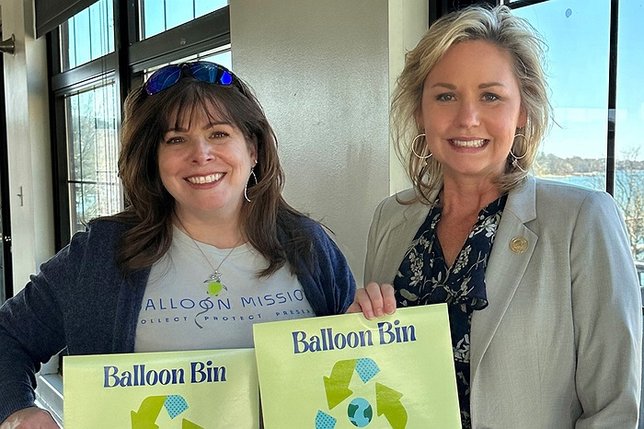Suffolk County Legislator Sarah Anker announces her partnership with Balloon Mission, a not-for-profit organization that collects and repurposes latex and mylar balloons before they become litter. Her office will provide a balloon recycling bin for drop off.
The organization’s Executive Director Cynthia Seibold comments, “We get it. People love balloons. Bright colors and big displays at a cheap cost, no wonder they’re more popular than ever! But when the fun is done, no one knows for certain where they end up or the unintended consequences they have in our world.”
According to the organization, mylar balloons are made from a thin plastic sheet, then sprayed with aluminum to give them a shiny reflective surface. Out in the environment, mylar balloons will degrade, lose their coating and turn clear like a plastic bag. While latex balloons are made from rubber, they have an added plastic to make them stay inflated longer and are not biodegradable. Plastic ribbons and balloon debris float at the top of the water column where they are ingested by animals or entangled in them. This can cause death by suffocation, starvation, or drowning.
In 2019, Legislator Anker sponsored legislation to ban the intentional release of balloons after she was made aware of the hazard balloons cause to our sea life and environment.
“Thousands of helium balloons were being released at high school graduations, events, and celebrations. Those balloons eventually ended up on the ground, caught up in trees or electrical lines, or most likely landed in our ocean. Sea creatures and birds can become entangled in balloon debris, choke or die. People need to be aware how serious this issue is,” said Legislator Anker. “A study found that balloons are the highest risk of plastic debris for seabirds. In addition to balloons, plastic debris kills over 100,000 sea mammals each year. With so much pollution in our ocean, we can make a difference by taking this small step to help clean up our ocean.”
One of Balloon Mission's initiatives is to partner with the district to raise awareness and give people a chance to do better for our environment. For more information about Balloon Mission go to https://balloonmission.org/. If you would like to drop off balloons call Legislator Anker’s office at 631-854-1600.










